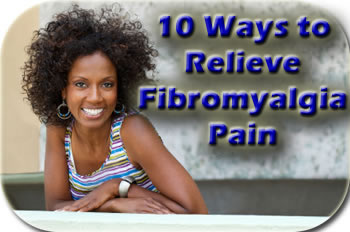10 Ways to Relieve Fibromyalgia Pain
 Fibromyalgia affects 5 million Americans age 18 or older. Around 80-90% of those diagnosed with fibromyalgia are women, however, men and children are also susceptible to the condition. Fibromyalgia is a medical condition associated with chronic pain, heightened sense of pain/pressure, fatigue, mood swings and cognitive issues. The California State Department of Health recently categorized Fibromyalgia as a form of arthritis. It is typically described as a chronic mixture of pain and decreased levels of energy. Fibromyalgia is also related to mental disorders and conditions, like depression and anxiety, or stress related disorders, such as PTSD. Those suffering from fibromyalgia describe chronic muscle pain that occurs during the day and night. Along with hypersensitivity to cold temperature, symptoms include: lack of concentration, forgetfulness, headaches, irritability and even nausea. Some research considers stress or poor physical conditioning as factors that may cause fibromyalgia. Research also suggests that muscle "microtrauma" (slight damage) can lead to chronic pain and fatigue. Many patients are diagnosed during their “middle-age,” but some symptoms can be present earlier in life. Fibromyalgia isn’t treated as a single disease, but more as a collection of symptoms that require individual treatment. Causes of fibromyalgia are still widely unknown, but are often linked to deficiencies or ineffectiveness of neurotransmitters in the brain. Complications with normal serotonin and dopamine excretion may be directly related to the cause and the symptoms of the condition. Factors such as an infectious illness, physical/emotional trauma, or sudden hormonal changes may possibly lead to the development of fibromyalgia. Fibromyalgia is often clouded in mystery because of its relation with multiple symptoms that affect the body in different ways. Since fibromyalgia mimics the symptoms of other types of illness, it is often treated from many different approaches which may include physical therapy, psychotherapy, and possibly alternative medical treatments. Other treatment options include simple, natural remedies that have been known to alleviate the pain of fibromyalgia or help to prevent the condition altogether.
Fibromyalgia affects 5 million Americans age 18 or older. Around 80-90% of those diagnosed with fibromyalgia are women, however, men and children are also susceptible to the condition. Fibromyalgia is a medical condition associated with chronic pain, heightened sense of pain/pressure, fatigue, mood swings and cognitive issues. The California State Department of Health recently categorized Fibromyalgia as a form of arthritis. It is typically described as a chronic mixture of pain and decreased levels of energy. Fibromyalgia is also related to mental disorders and conditions, like depression and anxiety, or stress related disorders, such as PTSD. Those suffering from fibromyalgia describe chronic muscle pain that occurs during the day and night. Along with hypersensitivity to cold temperature, symptoms include: lack of concentration, forgetfulness, headaches, irritability and even nausea. Some research considers stress or poor physical conditioning as factors that may cause fibromyalgia. Research also suggests that muscle "microtrauma" (slight damage) can lead to chronic pain and fatigue. Many patients are diagnosed during their “middle-age,” but some symptoms can be present earlier in life. Fibromyalgia isn’t treated as a single disease, but more as a collection of symptoms that require individual treatment. Causes of fibromyalgia are still widely unknown, but are often linked to deficiencies or ineffectiveness of neurotransmitters in the brain. Complications with normal serotonin and dopamine excretion may be directly related to the cause and the symptoms of the condition. Factors such as an infectious illness, physical/emotional trauma, or sudden hormonal changes may possibly lead to the development of fibromyalgia. Fibromyalgia is often clouded in mystery because of its relation with multiple symptoms that affect the body in different ways. Since fibromyalgia mimics the symptoms of other types of illness, it is often treated from many different approaches which may include physical therapy, psychotherapy, and possibly alternative medical treatments. Other treatment options include simple, natural remedies that have been known to alleviate the pain of fibromyalgia or help to prevent the condition altogether.


2 Comments - 10 Ways to Relieve Fibromyalgia Pain
Suzanne Burt May 18, 2016
ReplyChristina Flatt August 18, 2016
Reply